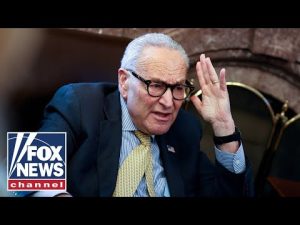In a recent turn of events, the sports world finds itself embroiled in controversy, amidst allegations involving high-profile figures in the NBA. Cash Patel, a notable commentator, has stepped into the spotlight, calling out the media’s peculiar fixation on former President Donald Trump in reaction to these developments. With the drama unfolding in the sports realm, Patel doesn’t hold back in his critique of how sports journalism addresses crime and corruption.
The catalyst for this conversation arose when Stephen A. Smith, a popular sports analyst, suggested that Trump’s involvement in the discussion is nothing more than revenge against the NBA due to its perceived left-wing politics. Patel is quick to dismiss this notion, deeming it one of the most nonsensical comments to ever grace the airwaves. He points out that the real focus should be on the allegations against an NBA Hall of Famer and a current head coach potentially tied to a gambling scheme linked to organized crime. Instead of investigating the serious implications, the media has shifted its attention to Trump, illustrating how the narrative is manipulated to serve certain agendas.
The situation is more than just a misunderstanding; Patel argues it signifies a larger problem within the sports industry and media. He argues that the environment surrounding professional sports encourages behaviors that go against traditional values. Athletes, once seen as role models, are now often idolized for behaviors that embody the worst aspects of both celebrity and culture, which promotes a “gangster” lifestyle. From extravagant displays of wealth to associations with less-than-reputable characters, the standards seem to have shifted dramatically over the years.
Moreover, Patel highlights a troubling trend that sees athletic figures flaunting their wealth and status, which can impact young fans who look up to these stars. Professional athletes are increasingly dressing in ways that may seem more appropriate for a music video than a basketball court, with heavy jewelry and flashy attire becoming the norm. Not to mention, the lack of professionalism appears to be seeping into the very fabric of sports entertainment. The question emerges: has the spirit of sportsmanship been lost in the shuffle?
With references to figures who once enforced a dress code to maintain professionalism, Patel notes that the gravity of these shifts is evident. The traditional values that once inspired discipline and respect are being replaced by a troubling narrative that glorifies ostentatious behavior. The consequences extend beyond mere aesthetics—it’s influencing how the next generation perceives success and integrity. Young athletes today often feel pressured to mimic the antics of their favorites on the field, which has initiated a culture of self-centered displays rather than teamwork and sportsmanship.
In the end, Patel encourages a reevaluation of values within both the sports industry and its media coverage. The concerns about corruption and the compromising nature of some players’ lifestyles are not unfounded. Observing the connections between athletes and dubious affiliations raises alarm bells that cannot be ignored. As fans and commentators, the call is for a serious look at how this environment is created and, more importantly, how to clean it up. With sports representing a powerful cultural influence, it seems the industry stands at a crossroads—one that may determine the legacy of its athletes for generations to come.







